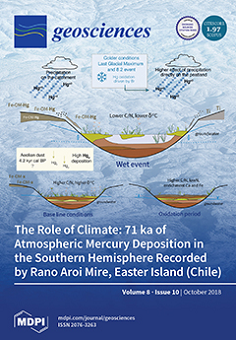Open AccessArticle
Using a Multi-Proxy Approach to Detect and Date a Buried part of the Hellenistic City Wall of Ainos (NW Turkey)
by
Martin Seeliger, Anna Pint, Peter Frenzel, Paula K. Weisenseel, Ercan Erkul, Dennis Wilken, Tina Wunderlich, Sait Başaran, Heike Bücherl, Marina Herbrecht, Wolfgang Rabbel, Thomas Schmidts, Nina Szemkus and Helmut Brückner
Cited by 9 | Viewed by 5305
Abstract
Throughout mankind’s history, the need to secure and protect the home settlement was an essential one. This holds especially true for the city of Ainos (modern Enez) in Turkish Thrace. Due to its continuous settlement history since the 7th/6th century BC, several different
[...] Read more.
Throughout mankind’s history, the need to secure and protect the home settlement was an essential one. This holds especially true for the city of Ainos (modern Enez) in Turkish Thrace. Due to its continuous settlement history since the 7th/6th century BC, several different types of city walls were built—sometimes even on top of each other—several of which have been preserved over time. To decipher the construction style, the course and the age of a buried city wall segment in the southern part of the former city, a geoscientific multi-proxy approach including magnetic gradiometer (MG) and electrical resistivity tomography (ERT) measurements in combination with granulometrical, sedimentological and microfaunistical investigations on sediment cores was applied. We were able to (1) present reasonable arguments for its Hellenistic age; (2) reveal the course of this wall segment and extrapolate it further north into a less studied area; and (3) demonstrate that in this near-coastal area, the former swampy terrain had been consolidated for constructing the wall. Our multi-proxy approach serves as a valuable example for investigating buried structures in archaeological contexts, avoiding a less-economical, time-consuming, or even forbidden excavation.
Full article
►▼
Show Figures





